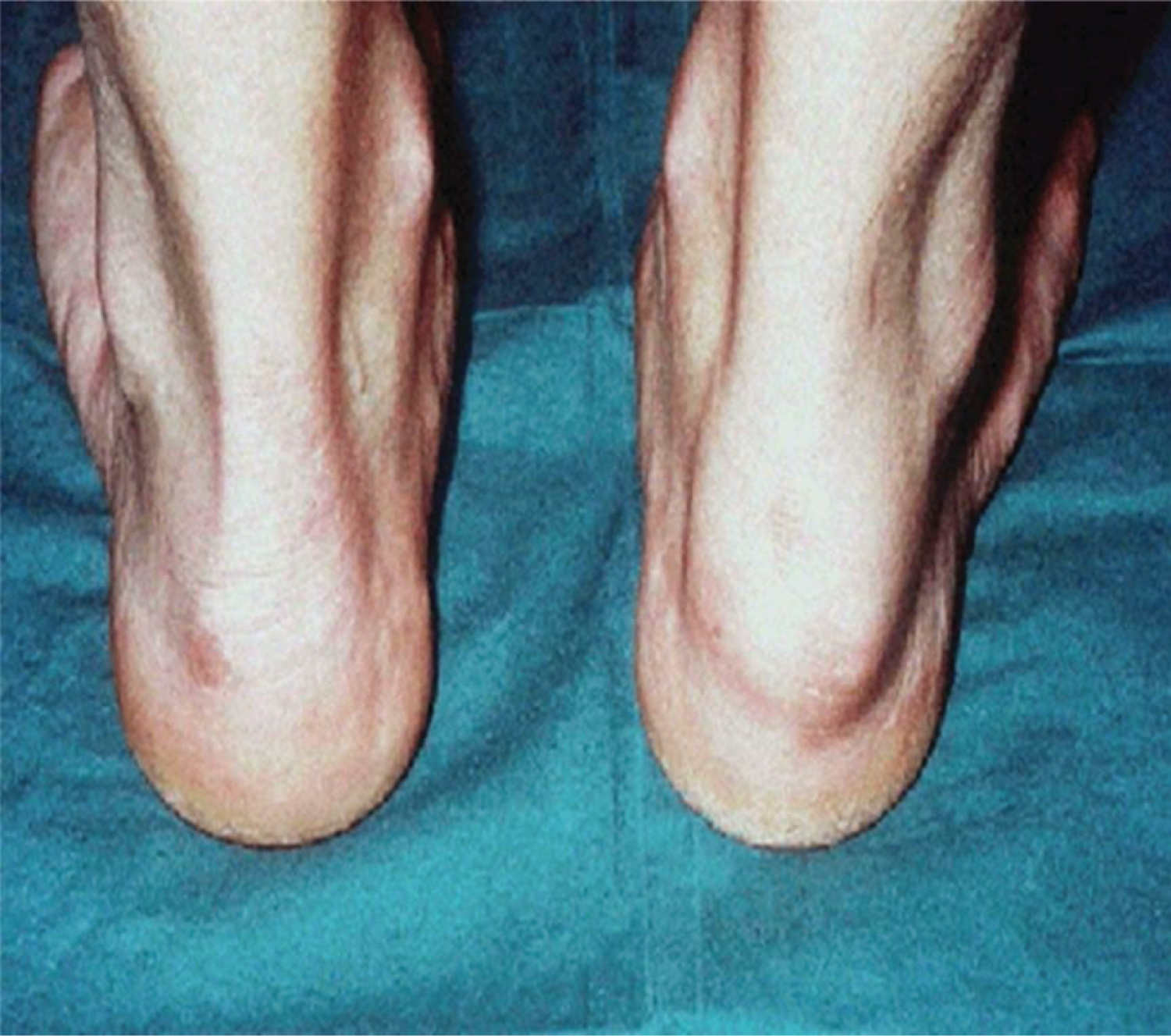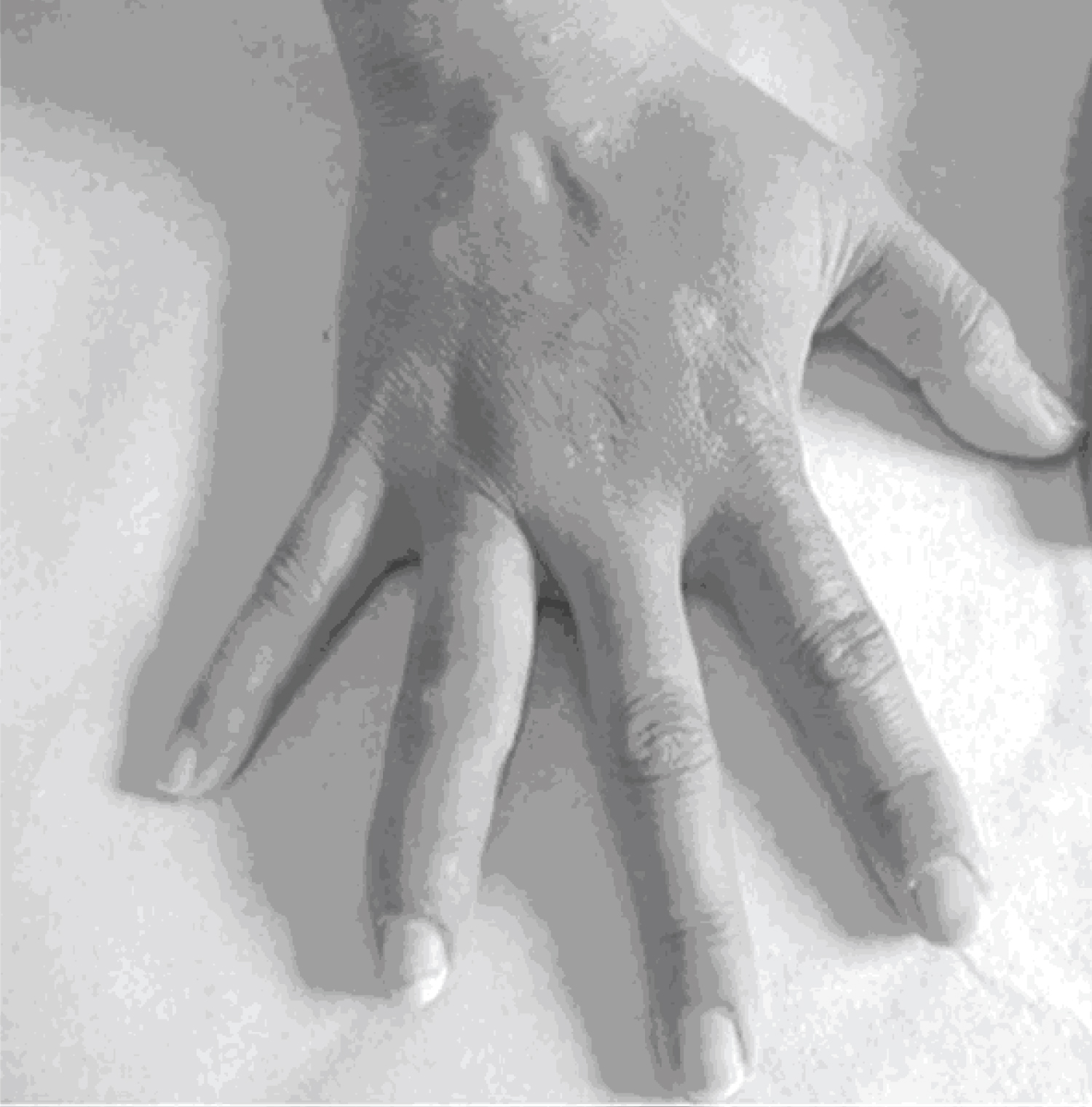The purpose of this study was to describe the clinical patterns of arthritis in psoriasis, to evaluate the relationship between skin severity and joint activity.
This study was carried out at the Rheumatology department in Benghazi University, follow up study Ninety-six (96) patients were diagnosed of Psoriasis arthritis (PsA), those patients were assessment clinically of skin psoriasis and nail involvement were assessed by the Psoriasis Area Severity Index (PASI). The Joint disease activity was measured by clinical diagnosis activity index (CDAI).
Our patients had had mean age (46 ± 12 years), (67.7%) were female affected, almost (75%) had Psoriasis lesion with mean duration of psoriasis M = (9 ± 4y) and PASI score was M = 1.5 ± 1, while (25%) had Family History of psoriasis and (11.5%) had Nail change. The clinical characteristics of Psoriasis arthritis (PsA) are most common pattern Asymmetrical oligoarthritis, followed Symmetrical polyarthritis, followed Spondylo arthropathy and Distal interphalangeal joint. The relationship between joint disease activity and skin disease severity are significant between CDAI and PASI P = (0.000), Patients with higher skin disease severity were more than two times to have higher joint involvement.
Strong relationship between joint disease activity and psoriasis skin severity; high PASI to have mod/high CDAI and higher psoriasis skin severity were more than two times to have Psoriasis arthritis.
Psoriasis arthritis, Psoriasis area severity index (PASI), Clinical diagnosis activity index (CDAI), Dactylitis, Enthesitis
Psoriasis arthritis (PsA) is an inflammatory seronegative spondyloarthropathy that occurs in association with psoriasis. Estimates of the proportion of patients with psoriasis who develop psoriatic arthritis range from 7 to 42% [1]. But other causes of arthritis should be considered. The family history is highly relevant [2]. The mean age of disease onset ranges from 30-55 years, with men and women affected equally. Psoriasis arthritis (PsA) [1,3-5] different definitions, as well as geography, may contribute to the variability [6].
Diagnosis of Psoriasis arthritis (PsA) is both clinical and radiological observations. There is no specific biological marker. Up to 20% of patients have hyperuricemia and acute phase reactants such as the C-reactive protein and the erythrocyte sedimentation rate may be elevated, correlate with disease activity [7,8].
Psoriasis arthritis (PsA) characteristically begins after 5 to 10 years of psoriasis, but may present at the same time as the skin lesions or even precede them. Some studies suggest that psoriatic arthritis occurs more commonly among patients with severe psoriasis [3,9,10].
The course of psoriatic arthritis is variable and unpredictable ranging from mild and nondestructive joint involvement to a severe, debilitating, erosive arthropathy. The purpose of this study was to describe the clinical patterns of arthritis in psoriasis, and to evaluate the relationship between skin severity and joint activity.
This study was carried out at the Rheumatology department in Benghazi University, Follow up study Ninety six (96) patients were diagnosed Psoriasis arthritis (PsA) according to the Classification of Psoriatic Arthritis (CASPAR) study 2006 as having psoriatic arthritis if score ≥ 3 point, these patients were attended to rheumatology clinic at Germany Libya-Hospital those patients were assessment clinically and laboratory test every 3 months in period between 2018 and 2019. The assessment of skin psoriasis and nail involvement were assessed by the Psoriasis Area Severity Index (PASI) score ranges from 0 to 72, PASI = 0% (No Psoriasis lesion or not current/active); low (PASI > 0% to ≤ 3%); and moderate-high (PASI > 3%). The Joint disease activity was measured by clinical diagnosis activity index (CDAI).
The CDAI comprised four assessments: Swollen (28) joint count, tender (28) joint count, Patient Global disease Activity and physician Global disease Activity, where CDAI ≤ 10 was low and CDAI > 10 was considered moderate-high.
Data and statistical analysis were done using the Statistical Package for Social Science (SPSS) version 20, Descriptive Statistics included the mean and Standard Deviation. The correlation between the Psoriasis Area Severity Index (PASI) and joint disease activity were calculated using Chi square test. P values less 0.05 were significant. We calculated the Odds Ratio (OR) to estimate the risk of high joint disease activity among patients with severe skin severity compared with patients with low joint disease activity and no skin involvement PASI = 0.
Ethical: My study done on human body by interviewed with a structured questionnaire in Rheumatology clinic no invasion investigation done and all patients had agreed precipitated in my work.
Ninety-six (96) patients diagnosed with Psoriasis arthritis (PsA) were included in the study. Patient's clinical characteristics are shown below (Table 1). The age of the study patients ranged from (18-60 years), M = (46 ± 12 Years), were female (67.7%) and male (32.3%), Duration of Psoriasis arthritis (PsA) range from (6m-10 years), M = (6 ± 3y) according to the Classification of Psoriatic Arthritis (CASPAR), 72 patients (75%) had Psoriasis lesion with mean duration of psoriasis M = (9 ± 4y) and PASI score was M = 1.5 ± 1, while 24 (25%) had Family History of psoriasis and 11 patients (11.5%) had Nail change. Other common rheumatic features of psoriatic arthritis include Dactylitis and Enthesitis were present in 20% and 31.2% of patients respectively, laboratory tests help in diagnosed Rheumatoid factor (RF) was negative in 90% patients with Psoriasis arthritis (PsA), while the ESR was raised (10-88) M = 38 ± 20 and CRP was raised (> 6 mg/dL) in 33.3% of patients. The clinical characteristics of Psoriasis arthritis (PsA) are shown below (Table 2) most common pattern 44 patients (45.8%) had Asymmetrical oligoarthritis, 24 patients (25%) had Symmetrical polyarthritis. 22 patients (23%) had Spondyloarthropathy and 6 patients (6.2%) had Distal interphalangeal joint. The relationship between joint disease activity and skin disease severity are shown below (Table 3) classification table of skin disease Severity in to PASI = 0% were 31 patients (32.3%), low PASI = > 0% to 3% were 20 patients (20.8%), moderate - high PSAI = > 3% were 45 patients (46.9%) by joint involvement clinical diagnosis activity index (CDAI), low vs. moderate-high in the PASI = 0% 20 patients had low CDAI and 11 patients had moderate-high CDAI. In, low PASI = > 0% to 3% 8 patients had low CDAI and 12 patients had moderate-high CDAI, in moderate-high PSAI = > 3%, 10 patients had low CDAI and 35 patients had moderate-high CDAI. We observed a significant relationship between CDAI and PASI analyzed by chi square test with P = 0.372-0.001-0.000 respectively.
Table 1: Clinical characteristics of patients in Psoriatic arthritis (PsA). View Table 1
Table 2: Patterns of psoriatic arthritis. View Table 2
Table 3: Relationship between joint disease activity (CDAI) and skin disease Activity (PASI). View Table 3
Patients with higher psoriasis skin severity were more than two times to have higher joint involvement (OR 2.7, 95% CI 1.6 to 5.8).
In this study of Libyan patients with Psoriasis arthritis (PsA) The demographic characteristics of Our patients had had mean age (46 ± 12 years), (67.7%) were female affected were different as report study, some study female more affected [11-13] other studies is more common in men [14-16]. needs further investigation, diagnosis of psoriatic arthritis is dependent upon both clinical of psoriatic arthritis in present or absence of psoriasis, our study (75%) had Psoriasis lesion with mean duration of psoriasis M = (9 ± 4y) and PASI score was M = 1.5 ± 1. Most patients who develop psoriatic arthritis have skin symptoms of psoriasis first, followed by arthritis symptoms. while (25%) had Family History of psoriasis and (11.5%) had Nail change. were agreement with other reported, approximately 20-40% of patients with psoriasis or Psoriasis arthritis (PsA) have a family history of these disorders in first degree relatives [17]. Nail lesions may help to identify those patients with psoriasis who are at higher risk of developing psoriatic arthritis [18,19].
One important characteristic of Psoriasis arthritis (PsA) is Enthesitis (inflammation at the site of tendon insertion into bone) (Figure 1), its most frequently affects the plantar fascia, Achilles tendon and the ribs and pelvis. Most clinical studies have reported the prevalence of enthesitis in Psoriasis arthritis 30-50% [13,20], Another feature is dactylitis (Figure 2) where a whole diffuse swelling of an entire finger or toe patients with psoriatic arthritis. Its occurring in 16-48% of Psoriasis arthritis [21] in our study rheumatic features of psoriatic arthritis include Dactylitis and Enthesitis were present in 20% and 31.2% of patients respectively were similar reported.
 Figure 1: Enthesitis of the Achilles tendon of a patient with psoriatic arthritis.
View Figure 1
Figure 1: Enthesitis of the Achilles tendon of a patient with psoriatic arthritis.
View Figure 1
 Figure 2: Dactylitis of the ring finger of a patient with psoriatic arthritis.
View Figure 2
Figure 2: Dactylitis of the ring finger of a patient with psoriatic arthritis.
View Figure 2
The term seronegative arthritis is most suitable for psoriatic arthritis [4,7]. Rheumatoid factor (RF) is found in 2 to 10% of patients with psoriatic arthritis. In our patient's Rheumatoid factor (RF) was negative in 90%, while the ESR was raised (10-88) M = 38 ± 20 and CRP was raised (> 6 mg/dL) in 33.3% of patients indicated active of psoriatic arthritis which measured by clinical diagnosis activity index (CDAI) we observed Mean of CDAI = 7.2 ± 4.1 reflecting disease activity of psoriatic arthritis.
Our patients had long standing disease with a mean 6 ± 3 years, patients had disease long duration reflecting Daley referral patient, Psoriasis arthritis (PsA) and the average diagnostic delay for Psoriasis arthritis (PsA) is 5 years [3,20].
The most frequent presentations are polyarthritis, followed by oligoarthritis. Distal involvement alone occurs in less than 20% of cases and may be associated with spondyloarthritis [22,23]. Our study found variation the most common pattern Asymmetrical oligoarthritis, followed Symmetrical polyarthritis, followed Spondyloarthropathy and Distal interphalangeal joint.
The relationship between joint disease activity and skin disease severity, we observed a significant relationship between CDAI and PASI, it is important to note that most patients in the high PSA to have moderate-high CDAI, Patients with higher psoriasis skin severity were more than two times to have higher joint involvement were agreement with other studies [22,24,25].
Diagnosis of Psoriasis arthritis (PsA) is based on clinical. Present of Psoriasis lesion or Family History of psoriasis or Nail change and rheumatic features of psoriatic arthritis include Dactylitis and Enthesitis, most common pattern of Psoriasis arthritis PsA are Asymmetrical oligo arthritis, followed Symmetrical polyarthritis. Followed Spondylo arthropathy, strong relationship between joint disease activity and psoriasis skin severity; high PASI to have mod/high CDAI and higher psoriasis skin severity were more than two times to have Psoriasis arthritis.
Psoriasis arthritis (PsA) should be more evaluated, estimated risk factors and prognostic factors order to start appropriate treatment as early as possible to improve quality of life.
Authors had no conflicts of interest.
Grateful to all patients who participated and help in accomplishing.
This work is given to my city Benghazi with hope improving health services to people.